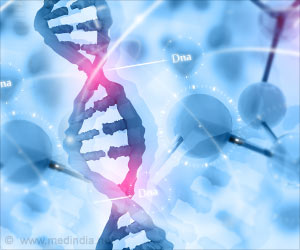Plastic bottles dangerous for not? A raging debate is on in US, with no clear cut answers available.
Plastic has become the centre of a raging controversy in the US.
Just a week after a group of 38 scientists concluded in a peer-reviewed journal that bisphenol A, a key ingredient , poses a significant risk, a government-appointed panel Wednesday disagreed.Bisphenol-A (BPA) is a chemical building block used to make polycarbonate plastic and epoxy resins.
Polycarbonate is often used in place of glass because it is clear, lightweight, heat-resistant, and shatter-resistant.
It is used in a variety of everyday products like eyeglass lenses, reusable food and drink containers and consumer electronics.Polycarbonate is so tough it is also used as bullet-resistant glass and is used to make bicycle helmets and other safety equipment to protect people from injuries.
Epoxy resins are inert materials used as linings in metal cans to protect foods and beverages from spoilage and other contamination. They are also used in electrical equipment, adhesives and a variety of protective coatings.
But the problem is whether bisphenol A leaches out of plastic baby and sports bottles and from the lining of tin cans, thus posing a serious threat to human health.
Advertisement
But the concern dropped to "minimal" when it came to the chemical harming the prostate of a developing fetus, or triggering early puberty when people are exposed to bisphenol A in the womb or as children. Links to other ailments -- including birth defects and fertility problems after adult exposures -- were deemed "negligible."
Advertisement
In 95 percent of people tested, bisphenol A is detected at levels that could be harmful, the scientists said.
When experts disagree, it's hard for people to know what to do. Do you toss the clear plastic Nalgene bottle for a metal one? Is it OK to eat tomato soup from a can and microwave leftovers in a plastic container?
It depends on how cautious you are and whom you decide to believe, commentators say.
Both groups reviewed hundreds of scientific papers. The government panel was convened specifically to provide advice about the risk to people posed by bisphenol A; the other group of experts set out to assimilate the entire state of scientific knowledge on the chemical, including some research on animals that the government panel discounted.
When it comes to the results from the government panel, "the important aspect of that is even though they're not saying as a group this is high risk, they're indicating there's a risk," said Fred vom Saal, a biologist at the University of Missouri and lead author of the report from the 38 bisphenol A experts.
Environmentalists and scientists, including vom Saal, criticized the review from the government's 12-scientist panel.
This spring, it was revealed that a contractor with ties to the chemical industry was involved with the government panel's analysis, raising the possibility of a pro-industry bias. The contractor was fired in April, and a government audit concluded the review was fair.
Critics also said that in some cases, important peer-reviewed research showing harm to lab animals exposed to small amounts of the chemical was not given the weight it deserved.
"We're talking about dozens and dozens of studies," vom Saal said. "And if those studies were included in the report, the level of concern would go through the roof."
The government panel was convened by the Center for the Evaluation of Risks to Human Reproduction, an organization that's part of the National Institute of Environmental Health Sciences and the National Toxicology Program.
A two-page summary of the panel's findings was released Wednesday. "We think it really does provide some strong reassurance that bisphenol A is not a risk to human health at the very low levels to which people could be exposed," said Steven Hentges, who, as the director of the Polycarbonate/BPA Global Group of the American Chemistry Council, is lead spokesman for the bisphenol A industry.
"We find that it is generally consistent with other governmental scientific bodies," Hentges said.
"They're not finding any high concerns at all."
He dismissed the report from the 38 scientists, saying that bisphenol A researchers bring a bias to the analysis and that some have taken advocacy positions opposing the chemical.
"There's something to consider there in terms of who is in their group," Hentges said. "Their views are at odds with everyone else who has looked at this issue."
He pointed to a study from the European Union that found levels of human exposure were too low to worry about.The research from the experts was published last week in six peer-reviewed papers in the journal Reproductive Toxicology. The experts met in November in Chapel Hill, N.C., to undertake a review of all the available research, including more than 700 publications.
Some of the experts said they try to reduce their own exposure to the chemical by using plastics made of other chemicals or glass dishes and eschewing canned foods and drinks.
People worried about the chemical will find it hard to avoid entirely. Bisphenol doesn't stick around long in the body though people are exposed to it regularly through food, air, dust and by touching items containing the chemical.
And whatever its impact on animals, links between exposure and harm in people are still lacking, it is felt.
"There's not much to speak of in terms of human research on bisphenol A," said Harvey Checkoway, a University of Washington professor in the department of Environmental and Occupational Health Sciences. He's helping with a project looking at workers exposed to bisphenol A in China and its effect on fertility and the development of their children.
Human studies are "just now being undertaken," Checkoway said.Research by government agencies will continue as well.
The Center for the Evaluation of Risks to Human Reproduction will be asking for public comments on the final report from the government-appointed panel. Then the National Toxicology Program will issue its own opinion as to whether current human exposures to bisphenol A are a health risk. After additional review, the report, comments and opinion will be distributed to federal health and regulatory agencies.
Said vom Saal: "We're not anywhere near the end of the game."
To be on the safe side people are advised to:
· Use glass baby bottles and dishes.
· Don't microwave food in plastic containers.
· Toss out old, scratched plastic dishes and containers. Don't wash plastic dishes in the dishwasher or using strong detergents, which can speed up wear and tear.
· Avoid canned food and drinks.
· Avoid using plastic wraps.
So wait till the jury is out, but better play it safe is the message.
Source-Medindia
SRM/J





